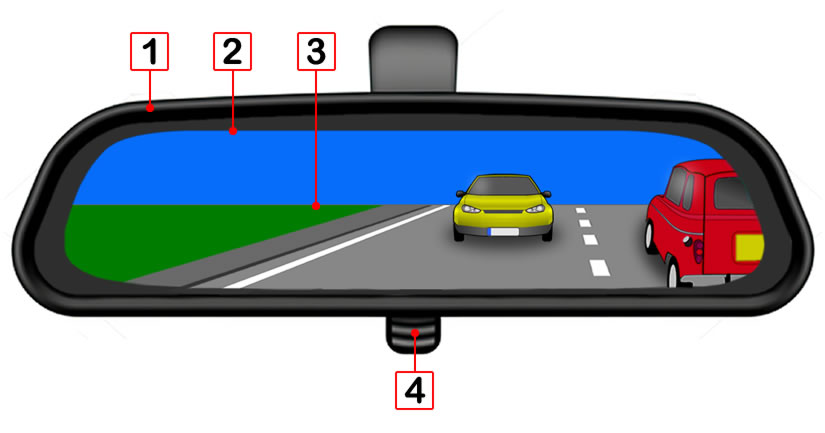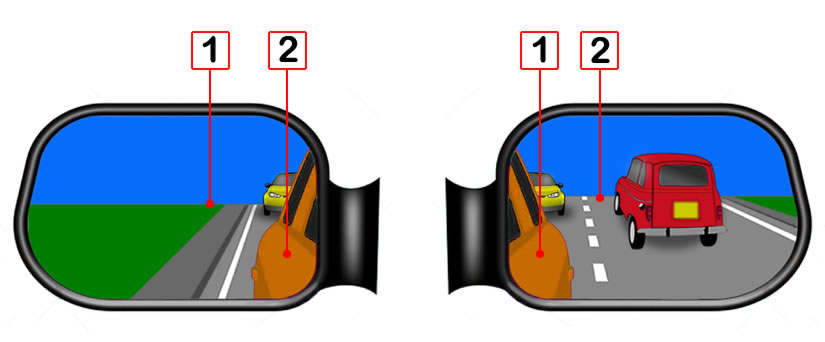Adjusting your Car Mirrors Tutorial
All round observation is critical for safe driving. Your car’s internal rear view mirror and two side mirrors allow you to see what’s going on behind you and to the sides of your vehicle. It’s important that you adjust your car mirrors so that they provide the maximum visibility possible and to minimise blind spot areas. This tutorial explains how to adjust your internal mirror and side mirrors correctly.
When Should You Adjust your Car Mirrors?
If you are about to drive a car that another person has been driving before you, you must run through the cockpit drill before setting off. The cockpit drill involves making adjustments to the seat so that you can comfortably reach all the controls and also includes adjusting your car mirrors. If it’s only yourself that’s driving the car, you’ll usually need to run through the cockpit drill once, just before you drive it for the first time.
How to Adjust the Rear View Mirror
Use this tutorial to set up and adjust the rear view mirror, or internal mirror as it’s also called. Ensure you have adjusted the seat so that you can comfortably reach all the controls before adjusting the mirrors.

- Plastic mirror surround: To avoid getting finger print smudges and smears on the glass, adjust the rear view mirror by gripping the plastic surround of the mirror only.
- Outline of rear window: As best as possible, sit in your normal driving position and adjust the mirror so that you can see as much of the rear window as possible and as little of your car’s interior.
- Horizon: Adjust the mirror so that the horizon is about half way in the mirror. That’s about half sky and half land that you can see.
- Anti-glare switch: If you have a switch like this on the underside of your mirror, it’s an anti-glare feature. If driving at night and the lights of the vehicle behind you are bright, flick the switch to stop the glare.
How to Adjust the Side Mirrors
Use this tutorial to set up and adjust the side mirrors, or door mirrors as they’re also called. Ensure you have adjusted the seat so that you can comfortably reach all the controls before adjusting the mirrors. Adjust the mirrors while sitting in your normal driving position.

- Horizon: In both the left and right side mirrors, adjust the mirrors so that the horizon (where the sky and ground meet in the middle) falls horizontally in the centre of the mirrors.
- Your own car: Adjust the mirrors so that you can see only a small part of your own car in each mirror.
Why should I see my car in my side view mirrors. By doing so I enlarge my blind spot and at a certain moment I can see the car behind me in my 3 mirrors. I don’t need to know where the rear of my car is. It’s following me.
There are many other tutorials that do not recommend this method.
Hi Spiro,
As you say, there are other ways to adjust your mirrors, but this method is perfectly acceptable and still used by many driving instructors. This method is ideal for new drivers as it gives them a point of reference for setting their mirrors (the slight view of the rear of the car). When you ‘see’ your car in your side mirrors, it’s a very small amount of the rear of the car, if you adjust it any further than this, you’ll be making two blind spots rather than one. There’s almost always blind spots in mirrors, that’s why we teach learner drivers to physically check them rather than relying on mirrors.
When you start going into techniques that claim to eliminate blind spots, you then open up potential hazards that should at best be avoided.